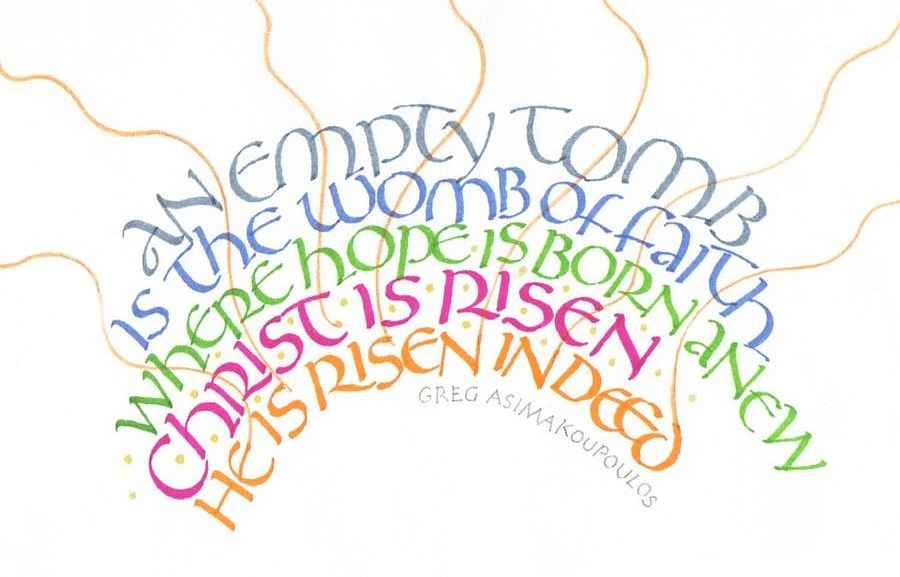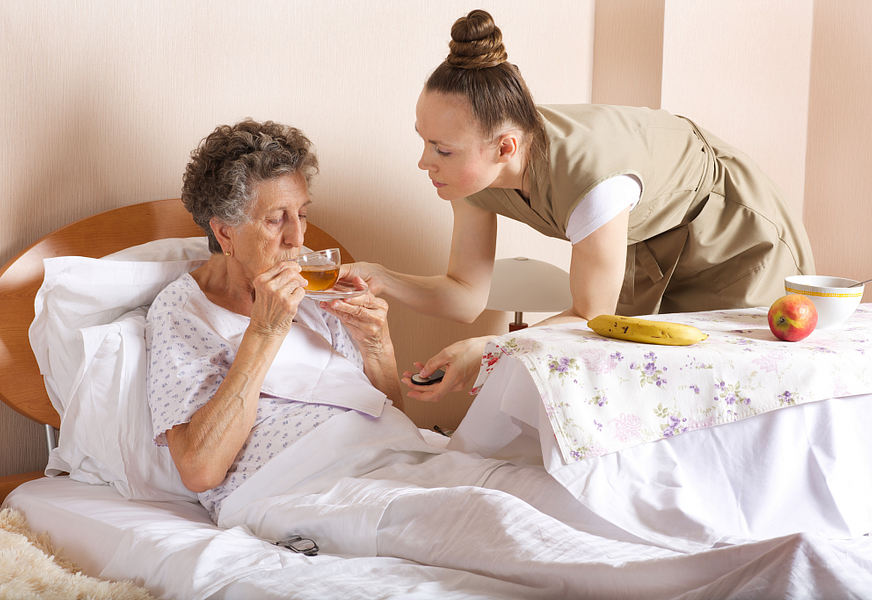





See listing of Recent and Most Popular articles on the Home Page
Finance and Legal
Category: Health & Wellness / Topics: Circumstances, Life Events • Coping • Cost of Living • Crisis • Financial • Health Care • Legal • Optimal Aging • Social Issues • Statistics
The Staggering, Exhausting, Invisible Costs of Caring for America's Elderly
Posted: August 28, 2021
As millions 'age in place,' millions more must figure out how to provide their loved ones with increasingly complex care…
Editor's note: The following is an excerpt of a much longer article. It appeared on The Goods by Vox on August 26. A link to the full article will be found at the bottom of this page. Here, Anne Helen Peterson tells the story of Laura. The rest of the article goes into greater detail, with more examples.
When Laura sent me an email in early August, the first thing she did was apologize. “Please excuse how inelegant and disjointed this will be,” she wrote. “It matches my brain after being a caregiver since 2013.”
In 2013, Laura was several decades into a career as a marketing consultant. Her work was rewarding and challenging; she felt like she got to be creative every day and was never bored. She had gone freelance in the early 2000s and reveled in the freedom of being her own boss. Then her 78-year-old mom began experiencing severe back pain. She was scheduled for surgery, but the symptoms only worsened after the procedure. She was soon rushed back to the hospital following the collapse of her spinal cord. After emergency surgery, her pain lessened, at least somewhat, but then Laura was left to deal with her mom’s quickly accelerating dementia. “She went from normal cognition to thinking it was her wedding day and that I was her mother,” Laura told me. “She didn’t know how to walk, and didn’t remember what had happened to her.”
According to elder care experts, Laura’s description of what happened to her mom is pretty common. As someone ages, their health appears to gradually deteriorate in a way that doesn’t seem alarming. Most of the time, though, they’re inching toward a cliff — and when they fall off, they find themselves on another health cliff, and another, and another. With each cliff, it gets more difficult for a family member to catch them.
Some older adults have diligently prepared for their future. They purchased long-term care insurance when it was still affordable, then paid the premiums each month, even as they continued to rise. This is not the norm. Many adults have no plan at all, or assume that Medicare, which currently kicks in at age 65, will cover their health costs. Medicare, however, doesn’t cover the long-term daily care — whether in the home or in a full-time nursing facility — that millions of aging Americans require. For that, you either need to pay out of pocket (the median yearly cost of in-home care with a home health aide in 2020 was $54,912, and the median cost for a private room in a nursing home was $105,850) or have less than $2,000 in assets so that you can qualify for Medicaid, which provides health care, including home health care, for more than 80 million low-income Americans. Even if you qualify, the waiting list for home care assistance for those with Medicaid tops 800,000 people and has an average wait time of more than three years.
That’s how millions of Americans find themselves in situations like Laura’s. A nursing home is too expensive; or, because of ongoing staffing shortages, there aren’t even open beds in the area. Over the past year and a half, many have also deemed them too risky because of Covid-19 concerns. In-home care seems more complicated, but it’s almost always what the care recipient wants, especially if it means the ability to stay in their own home. So the family decides to make it work, without a real understanding of the often-invisible costs that will quickly begin to accumulate.
“My mother and I had always been close, as much friends as mother and daughter,” Laura told me. Laura thought, with the freedoms of her job, she could manage care for her mother at her parents’ home, even if it meant slightly decreasing the number of clients she took on. “Looking back, I realize how naive I was,” she said. “My clients dropped away, some after more than 20 years of working together. You can’t care for someone with such high needs and still manage to put in a day of work.”
In the years that followed, Laura’s mother broke her hip. Her dementia worsened. Her father was also diagnosed with dementia, and would occasionally hit people. Laura attempted to go along with their realities to avoid agitation, which made her feel like she was living in “this weird, make-believe version” of the world. Without any outside help, she felt herself receding into an automated routine of changing diapers, bathing, washing bedding, cooking meals. The feeling was not dissimilar from caring for a baby, only babies get older and their care gets easier. The opposite is true for elder care.
“Watching people you love suffering is debilitating, but you have to keep going,” Laura said. “That’s just another thing you tamp down. You have to stuff away anything you’re feeling because there isn’t time for that. You have too much to do.” Her parents’ medical needs kept getting more intense, but as is the case with so many elders “aging in place” — living in their own homes, which AARP found the vast majority of older adults prefer — or moving in with a family member, they were too much for Laura but too little to justify (at least to insurers, or Medicare) a full-time nursing facility.
Laura’s mother died last year. Her father died four months ago, but not before developing kidney cancer that eventually did necessitate nursing home care. Once there, he became so agitated and combative that the staff required Laura to sleep in the room — in the middle of an active Covid-19 outbreak — just to keep an eye on him. After he died, in what Laura described as a “crazy mess of death,” Laura found herself with a decimated retirement account, no other savings, and no income. “I’m 63, and need to find a job,” she said. “But who wants a 63-year-old? I can’t even manage to put together a decent résumé. I’ve gone from a strong, confident woman who could handle anything to someone who can barely function.”
Over the past eight years, Laura lost much of her support system; she couldn’t go anywhere, couldn’t socialize, couldn’t maintain friendships. She can’t remember what her family used to be like and keeps replaying scenes in her mind, wondering whether she could have provided better care. “It’s a weird sort of amnesia I’m left with,” she said. “I think this is PTSD.”
Depending on your own experience with elder care, Laura’s case might sound extreme. But it isn’t, not really. It’s just that most of this care work — both paid and unpaid — remains invisible. According to the most recent data from the AARP, an estimated 41.8 million people, or 16.8 percent of the population, currently provides care for an adult over 50. That’s up from 34.2 million (14.3 percent) in 2015.
Of those caregivers, 28 percent have stopped saving, 23 percent have taken on more debt, 22 percent have used up their personal short-term savings, and 11 percent reported being unable to cover basic needs, including food. The average age of someone providing care for an adult is 49, but 23 percent are millennials and 6 percent are Gen Z. Sixty-one percent are women, and 40 percent provide that care within their own homes, up from 34 percent in 2015.
Read the full article (link below) for more details and examples. Peterson closes with these thoughts on what needs to be done:
As a society, we are living so much longer, and the diseases and conditions we live with require so much more: more care, more medicine, more vigilance, more maintenance. Which is why piecemeal solutions are laughably insufficient. We need to actually create a viable system, one that doesn’t ask people to be unspeakably wealthy, furtively siphon off their assets, or wait for years for affordable care. Then we need to make the people working within that system visible and their labor, in turn, valuable.
That requires legislative buy-in and, perhaps even more difficult, an ideological shift in our conception of what makes labor essential and a rejection of the belief that we don’t need social safety nets in this country because we have women. None of that work can start if we pretend our loved ones won’t fall off a cliff and suddenly need our whole selves to cushion the fall, if they haven’t already.
Talking to dozens of adult caregivers, I heard variations on the same theme over and over again: It’s brutal, it’s tearing my family apart, it makes me resent everyone, including the people for whom I’m providing care. The suffering is not new. The crisis has just further expanded within the middle class and the population at large, gradually making it less and less ignorable. “We can’t have a strong economy if we have millions of people working as full-time caregivers and making so little that they are still living in poverty,” Secretary of Commerce Gina Raimondo recently told the New York Times. “We can’t have a strong economy when we have millions of other people dropping out of the work force to take care of elderly loved ones.”
Right now, several experts told me, the public alarm around the state of elder care is about where it was with child care 10, 15 years ago. We didn’t act on the alarm bells when it came to child care, and now the system is in a pandemic-accelerated crisis, with rippling effects across the economy. The question, then, is whether we want to wait the 10, 15 years for that implosion, right as even more Gen X-ers, millennials, and older Gen Z-ers age into caregiving roles and, shortly thereafter, need their own care. Or do we want to address the problem now, before it risks collapsing us, and our families, entirely?
If you’d like to share with The Goods your experience as part of the hollow middle class, email annehelenpetersen@vox.com or fill out this form.
Search all articles by Anne Helen Peterson
Posted: August 28, 2021 Accessed 887 times
![]() Go to the list of most recent Finance and Legal Articles
Go to the list of most recent Finance and Legal Articles
![]() Search Finance and Legal (You can expand the search to the entire site)
Search Finance and Legal (You can expand the search to the entire site)
![]() Go to the list of Most Recent and Most Popular Articles across the site (Home Page)
Go to the list of Most Recent and Most Popular Articles across the site (Home Page)
 Loading requested view...
Loading requested view...
